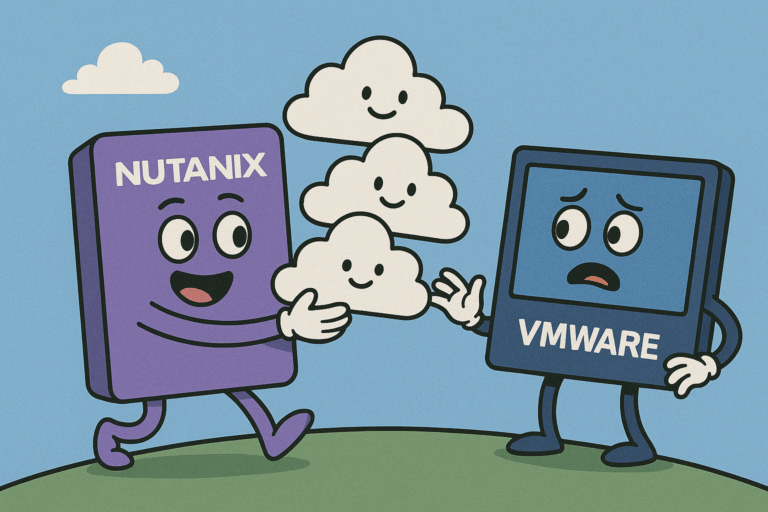At Nutanix Cloud Day, CTO Manosiz Bhattacharyya outlined the company’s comprehensive approach to becoming a leading VMware alternative, emphasizing software-defined infrastructure and customer choice across hybrid and multi-cloud environments. During Cloud Day the focus was a lot on being a VMware alternative. In this 25-minute interview, you learn everything you need to know about Nutanix.
Don’t forget to subcribe to the Techzine TV YouTube channel.
While Nutanix is widely recognized for hyperconverged infrastructure (HCI), Bhattacharyya emphasized that the company’s true foundation lies in software-defined infrastructure. Over the years, Nutanix has tried to perfect and expand its capabilities further. Now it’s going a step further by making many of its innovations available in a cloud native way where multi-cloud plays a central role.
Multi-cloud operations with unified control
The real value in multi-cloud operations lies in providing consistent operations across AWS, Azure, and Google Cloud Platform. “If I want to run something in Google and I want to run something in Amazon, if I have to learn new ways of doing things… it becomes more complex for the enterprise,” he explained. Nutanix enables organizations to maintain the same operational model across all cloud environments, reducing training requirements and operational complexity.
Embracing cloud-native architectures with Project Beacon
Nutanix addresses modern application requirements through Project Beacon and cloud-native AOS (CN-AOS). While NC2 targets traditional enterprise applications requiring infrastructure-level resilience, CN-AOS focuses on containerized, cloud-native workloads.
“What we are doing in cloud native is inverse,” Bhattacharyya explained. “If you’re building in the public cloud, you’re probably already using containers. The application is mobile, but the data is not mobile.” CN-AOS provides consistent storage functions across different Kubernetes platforms, whether running on AWS EKS, Google GKE, or bare metal infrastructure.
Database services evolution and innovation
The company plans to expand database services beyond traditional VM-based deployments to include Kubernetes-native databases. Future roadmap includes support for MongoDB, PostgreSQL, Redis, and Elasticsearch, reflecting the industry shift toward containerized database deployments. With the database services of Nutanix, most database administrator and management tasks, like optimizing and patching, are automated.
VMware migration is Nutanix biggest ticket to growth
With Nutanix Move every organization can migrate VM’s towards Nutanix. Bhattacharyya emphasized the importance of proper planning. “A VMware migration for a bigger enterprise should be planned well,” he noted. It’s not something you can do with the click of a button. While the technical migration of VMs can be automated, enterprises must consider business processes, integrations with third parties, and governance frameworks. Nutanix engages with customers to plan comprehensive migrations that address both technical and operational requirements. Many visitors of Cloud Day came to hear how they can plan their migration. Many organizations are currently looking into, planning, or already doing migrations of VMware instances towards Nutanix.
Sovereign cloud and air-gapped solutions
Another key subject we highlighted with Bhattacharyya is sovereign cloud. Growing geopolitical concerns drive demand for sovereign cloud capabilities, particularly in Europe and Asia. Nutanix addresses these requirements through air-gapped solutions that eliminate external dependencies. This is not fully available yet. By the end of the year, Nutanix plans to bring currently SaaS-delivered services like Nutanix Central and Data Lens on-premises, enabling complete air-gapped operations including ransomware detection and centralized management capabilities.
AI-driven infrastructure management
Looking forward, Nutanix envisions AI-powered agentic systems transforming infrastructure management. Bhattacharyya foresees a future where you just tell your infrastructure what you need, and it will be configured automatically. That innovation will move beyond current API-driven automation, but is currently not available or planned for this year. For a full overview, watch this 25 minute interview and learn everything you need to know about Nutanix.
Also read: How Nutanix uses Nutanix
